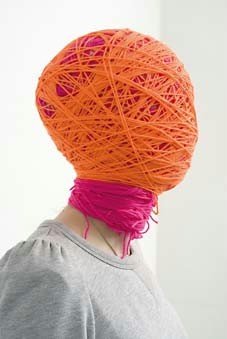Good prospects
dal 16/5/2008 al 13/6/2008
Segnalato da
Christian Tiefensee
Jorg Obernolte
Caterina Micksch
Agata Madejska
Belaid le Mharchi
Andrej Krementschouk
Margret Hoppe
Jon Adrie Hoekstra
Annette Grotkamp
16/5/2008
Good prospects
Martin Gropius Bau, Berlin
Young german photographers 2007/2008. The project centres on an annual competition for final assignments submitted by students from all the universities, universities of applied sciences and academies in Germany offering courses in photography.

“good prospects – young german photographers 2007/2008”, a project to promote talented young photographers, was launched on the initiative of Josefine Raab and Stefan Becht in 2004. The project centres on an annual competition for final assignments submitted by students from all the universities, universities of applied sciences and academies in Germany offering courses in photography. Each university can enter a maximum of five entrants for the competition.
The jury, consisting of Josefine Raab (initiator), Luminita Sabau (curator), Thomas Demand (artist and photographer), Mario Lombardo (art director) and Ingo Taubhorn (curator) selected 11 winners, who submitted 10 works for the talented young photographers’ project “good prospects – young german photographers 2007/2008”. As is invariably the case, good prospects has neither prize money nor a ranking list, but only the winners, who are named in strict alphabetical order.
Two people in a room, various props and the intention to produce one photo a day: Catrin Altenbrandt and Adrian Nießler, who have worked on joint projects for some time now, were the test persons for their own experimental piece entitled “What it’s not about”. The result is a colourful mixture of photography, typography and installation, in which creative, playful enthusiasm and spontaneous inspiration blend admirably with a marked striving for structural form.
In her series entitled “inner-wood” Annette Grotkamp makes her way into spaces of an artistic or cultivated nature in which she blurs the clear boundaries between interior and exterior and between real and created landscape in favour of poetic, natural compositions, in which the observer appears to float without any relation to space or time.
To produce his “Night Recorder” Jon Adrie Hoekstra first worked as a night-time reporter, using words and pictures to capture events over a certain period of time between midnight and 6 a.m. on a main road in the city of Münster (Westphalia). He presented what he recorded to the local residents in the form of an exhibition and a newspaper, thus taking the events back into the community.
In “Vanished Pictures” Margret Hoppe looks at works of art in the former German Democratic Republic and what has happened to its cultural legacy since the fall of the Wall.
The melancholic mood of the photos in Andrej Krementschouk’s “At Your House” reflect his remorse at the potential disappearance of his native village in Russia, thus raising the ever-topical issue of remembrance and loss, of emotional roots and cultural identity.
In “Portraits #1-#5” Belaid le Mharchi attempts to devise a pictorial translation for the horrors inflicted on both the victims and the world at large by the dropping of atomic bombs on Hiroshima and Nagasaki.
In “kosmos” Agata Madejska investigates the world of playgrounds, conjuring up magical places and images which take the viewer back into the long-forgotten world of childhood dreams.
“Gretchen” by Caterina Micksch comprises terse images of places in which murdered babies were discovered in 2006. As in Belaid le Marchi’s portraits, the combination of documentary objectivity in the photos and the knowledge of what caused the infants’ deaths instils a sense of horror and outrage in the observer.
In “Father Land and Mother Earth” Jörg Obernolte travels 778 kilometres from west to east along Federal Highway 1, documenting and commenting on his journey in a photographic travel diary.
In “Refuge” Christian Tiefensee undertakes a journey into the inner being – into the spiritual fabric that portrays the foundation of human existence as an open, flexible and ambivalent structure.
This year’s exhibition comprises over 200 individual motifs, two room installations, four books, two DVDs, two magazines and a newspaper. This makes it the most wide-ranging selection there has ever been since the project was launched. As was the case in the first three years, “good prospects” provides a unique and – in its detail – often surprising survey of the work of young photographers in Germany over the past 12 months.
The initiator, Josefine Raab, had the following to say on this year’s selection: “While there are perceptible trends, there is no pronounced direction. Every year “good prospects” reveals relatively strong currents and stylistic elements. In recent years there have been more instances of photography crossing over into other media, such as the cinema, theatre and performance, critical examinations of the media, self-projection und self-interrogation, and space and landscape photography. The year of Documenta XII saw an increase for the first time in the number of social and cultural issues raised by young German photographers, a development that is clearly reflected in this year’s selection.”
The German premiere of “good prospects – young German photographers 2007/2008” was at the Forum für Fotografie in Cologne.
Cologne: Forum für Fotografie (26 October 2007 – 21 December 2007)
Hamburg: Haus der Photographie, Deichtorhallen (17 January 2008 – 24 February 2008)
Burghausen: Haus der Photographie (6 March 2008 – 4 May 2008)
Berlin: Martin-Gropius-Bau (17 May 2008 – 14 July 2008)
The special 48-page edition of good prospects 2007/2008 is available free of charge at the Martin-Gropius-Bau.
Martin Gropius-Bau
Niederkirchnerstrasse 7 - Berlin
Opening Hours
Wednesday to Monday | 10–20 hrs
Tuesday closed
Admission
euro 3.50 | euro 2.50 reduced



